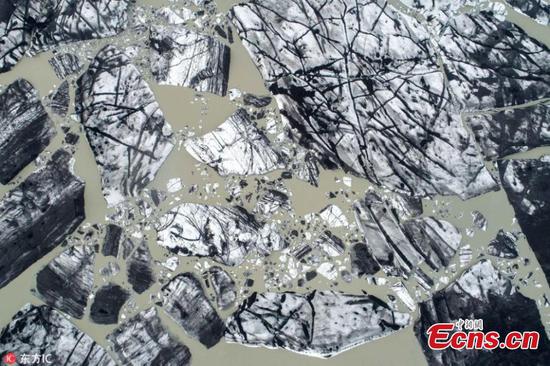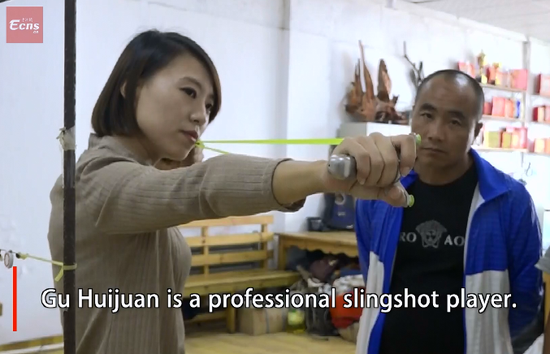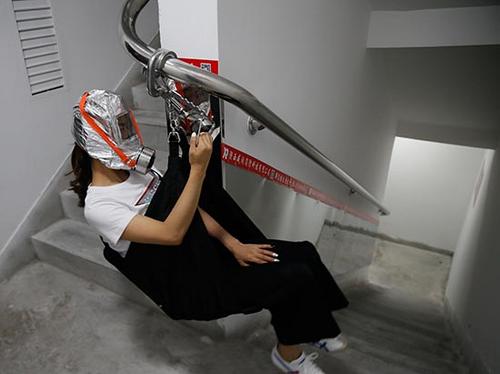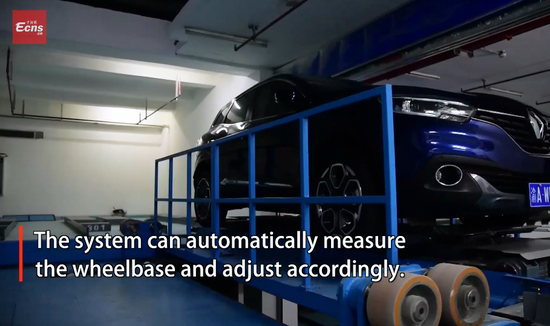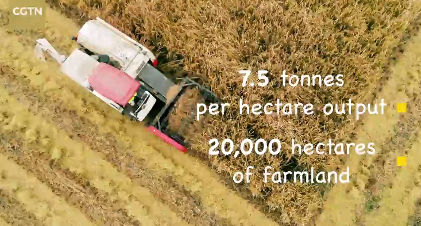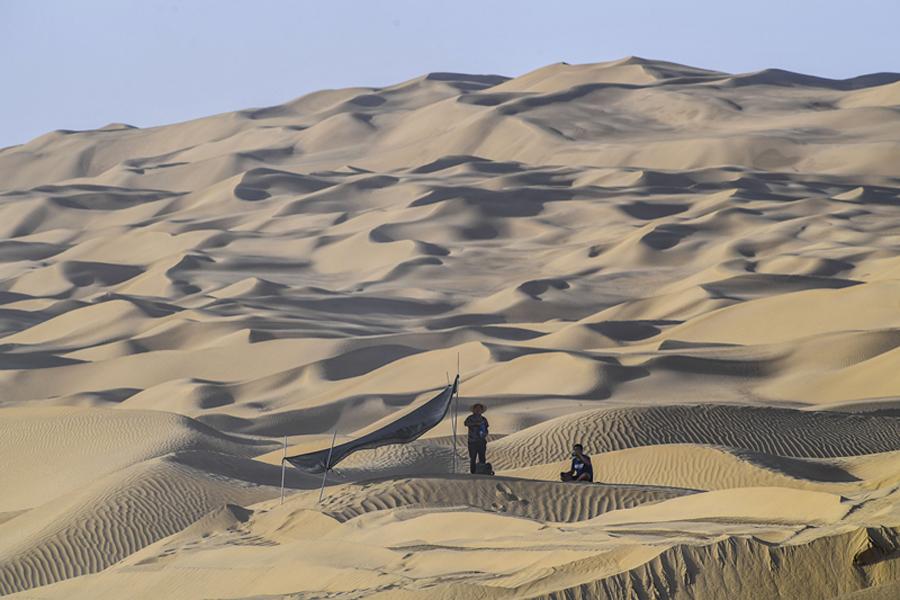
On a sand dune, two workers have a break near a temporary mat shelter. (Photo/Xinhua)
Workers are building only the third paved artery through the Taklimakan Desert to help people and products move more freely
Five bulldozers were working on the side of a 9-meter-high dune. In one of them sat Zhang Xiaodong, his cab swirling with sand. Fine dust had collected in the lines of his sweaty face.
The construction team is building a new road through the Taklimakan Desert, the largest desert in China, covering 337,000 square kilometers in the Xinjiang Uygur autonomous region.
When it is finished, the road will connect the counties of Qiemo in the north and Yuli in the south, becoming only the third paved artery through the vast expanse known as the "sea of death". In the Uygur language, Taklimakan translates as "go in and you won't come out".
Zhang, 47, came to work in Xinjiang 30 years ago. He cut his teeth on the roads built to transport the region's oil products.
Maneuvering the bulldozer to compress sand and create the road's surface is second nature to Zhang. He said the job comes with a healthy paycheck but also involves extreme heat, limited water, poor access to electricity, and a bad phone signal - not to mention sandstorms.
"I'm from Sichuan province, a place with green hills and clean water. But I've spent most of my life in the sand," he said. As well as Xinjiang, Zhang has worked in Saudi Arabia and the United Arab Emirates.
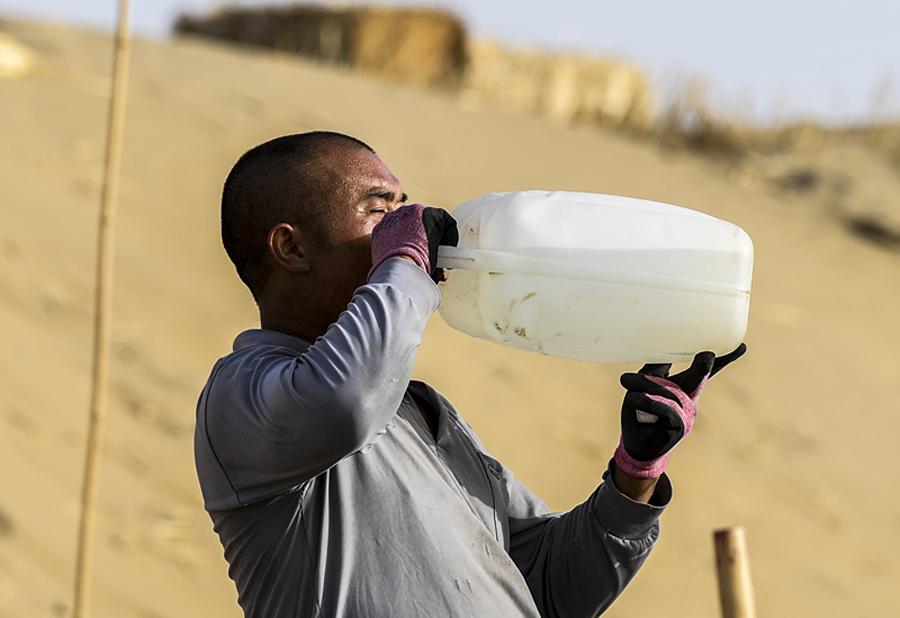
A worker drinks water during the break. (Photo/Xinhua)
This new road, however, could be his toughest project yet. Working for 10 hours a day, he makes hundreds of trips between dunes, digging up to 2,000 cubic meters of sand.
Towers of sand
More than a half of China's total desert area is in Xinjiang. Roads such as the one being built by Zhang and his colleagues are essential, making it easier for residents and goods to travel through these areas.
The first highway across the Taklimakan was opened to traffic in 1995 and runs north to south from Lunnan town to Minfeng county. At 522 km, it is the world's longest desert highway.
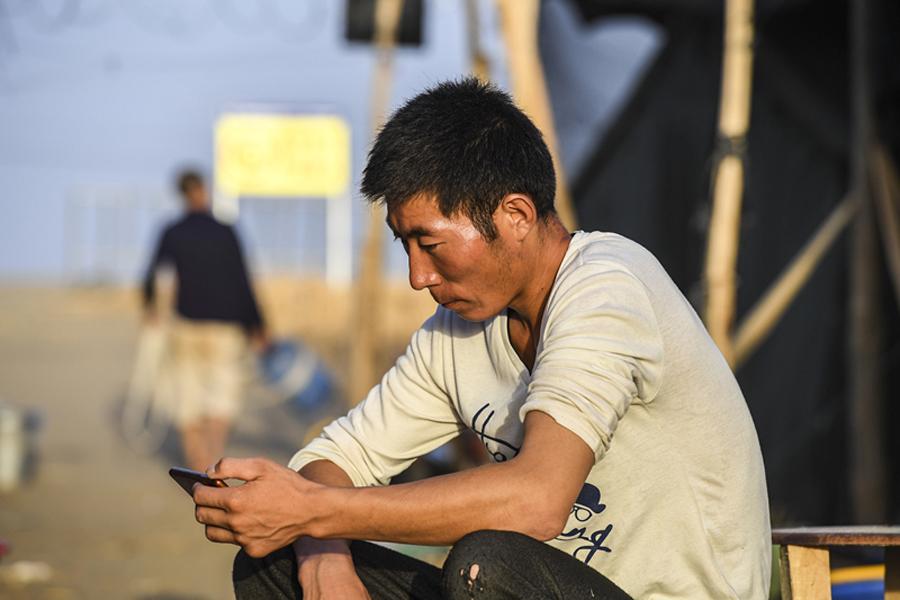
Xie Chunlong, a worker from Qinghai province, watches a TV drama on his mobile phone on a break from his work building a new road through the Taklimakan Desert in the Xinjiang Uygur autonomous region. (Photo/Xinhua)
The second, which stretches 424 km, was completed in 2007. It links the resource-rich and densely populated city of Hotan, in southern Xinjiang, with Aral, an underdeveloped city on the northern edge of the desert.
This new road will cover about 330 km and is expected to open in 2021. Hundreds of people from across the country have been recruited to construct it. After starting work in Qiemo, they have reached the desert's hinterland, more than 60 km away.
Li Qiushen, chief engineer of the highway project, who is also experienced in desert road construction, said he understands how difficult this project is.
"The road will pass dense, high dunes in the east of the desert. There are 32 of them, and the highest one towers more than 100 meters into the sky," he said. "There are also ravines between the dunes, with the widest 12 km across. The further we go, the more difficult it gets."
To deal with the limited water, this project makes use of the area's most abundant resource - sand, which is compressed to become roadbed. They dig out sand from the dunes to make the slopes gentler. And to prevent heatstroke, work stops at midday, and sheds have been provided so the workers can rest through the hottest part of the day.
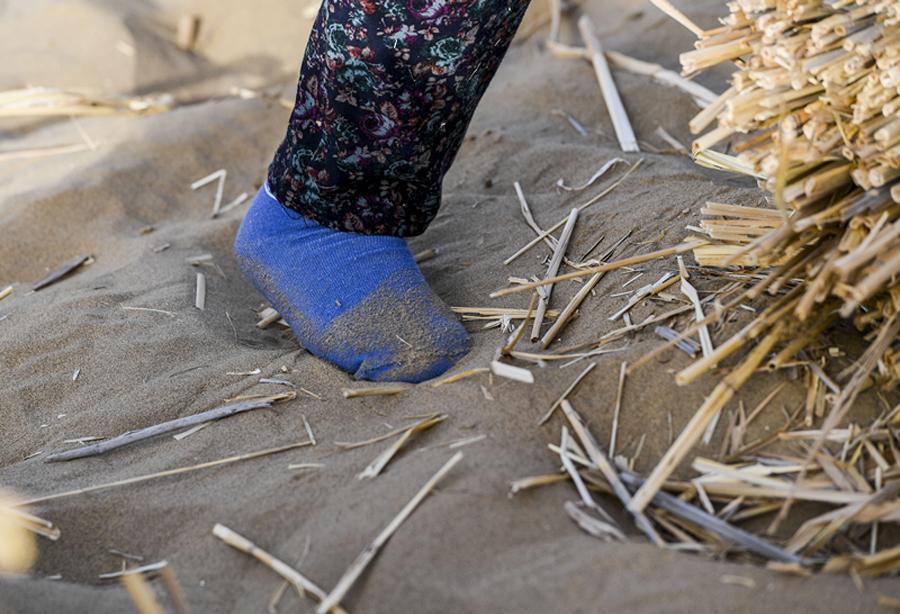
Because of the difficulty of walking in the desert, some of the women work only in socks. (Photo/Xinhua)
It was 7 pm, but the temperature was still above 50 C. To cool down, Zhang gulped down a bottle of water. There's nothing but sand as far as the eye can see. Eye problems are common among workers, and yet few quit. "The work is hard, but it pays well," Zhang said.
Good teamwork
The sandy roadbed will later be paved with layers of gravel and asphalt. But before that, laying sand barriers is an essential step to prevent the road from being buried by drift sand.
That job goes to Yang Yong, 33, and his 60 co-workers. Along the road, they are building reed checkerboard sand barriers, which look like bars of chocolate from the sky.
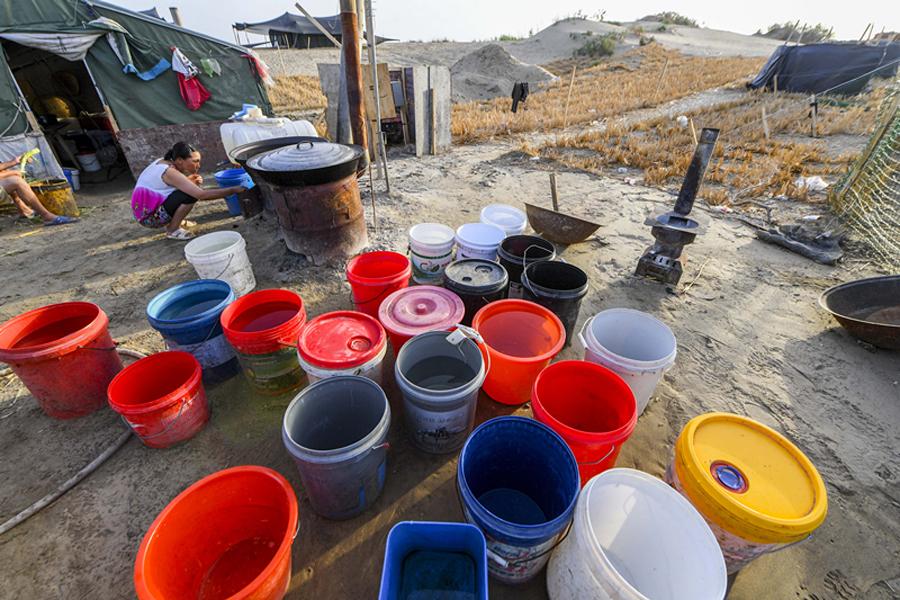
Buckets, for water storage, are a daily essential for living in the desert. (Photo/Xinhua)
There are a lot of couples in this team, which explains the good teamwork. The men carry up to 70 kilograms of reeds onto the dunes, the women lay the reeds on the sand, and then the men drive the dried reeds into the sand.
Every step in the desert is twice as hard than on stable ground. Some of the women work only in socks.
After work, there is little entertainment. Every day, Yang's wife calls her family.
Zhang said they used to keep chickens in the hope of improving their meal options, but strong winds swept two of the birds away. "We have so many things to talk about when we see someone outside the desert," he said. "Sometimes we long for life in the cities, but when we finally get to the big city, we always miss the serenity of the dunes."
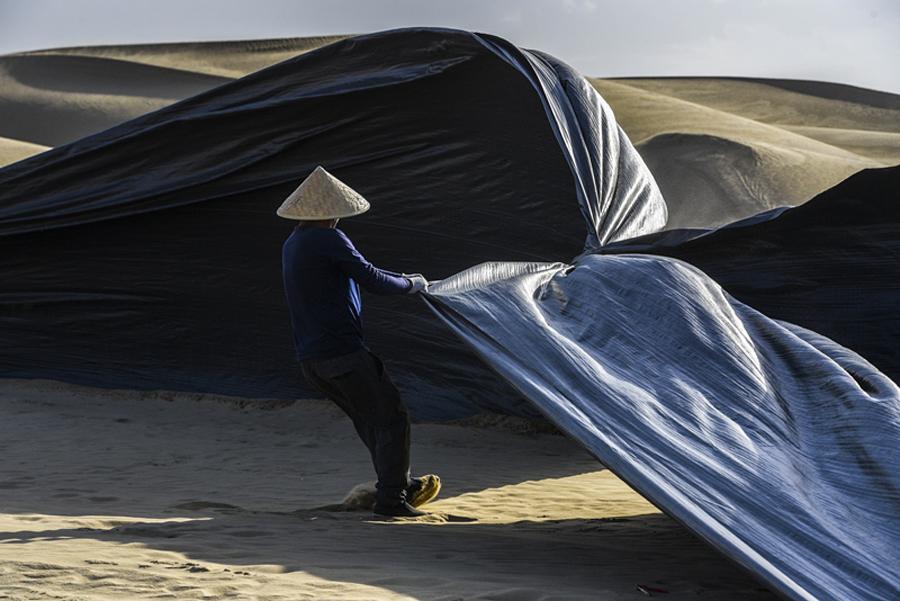
A worker covers the roadbed with woven plastic film before the arrival of a sandstorm. (Photo/Xinhua)















